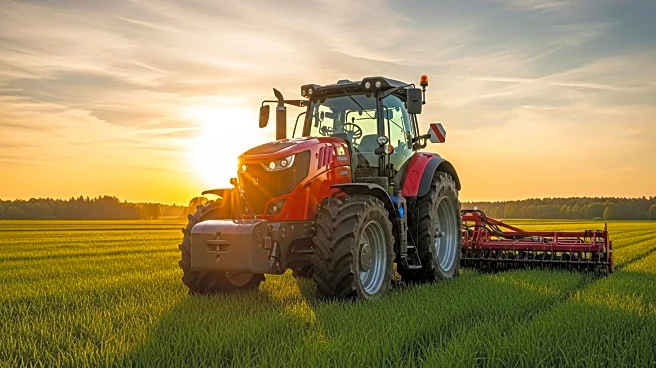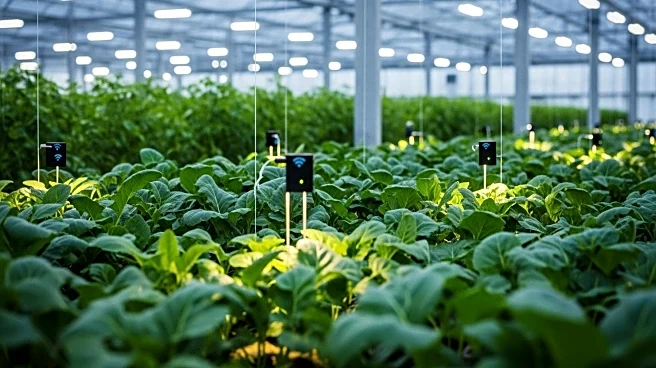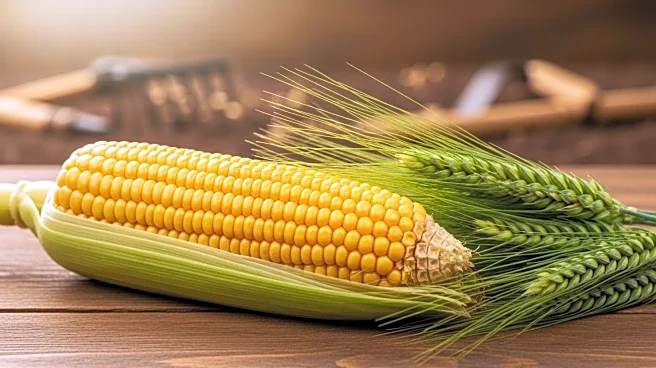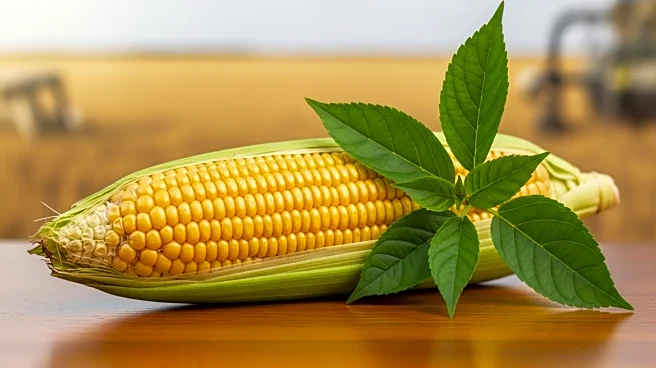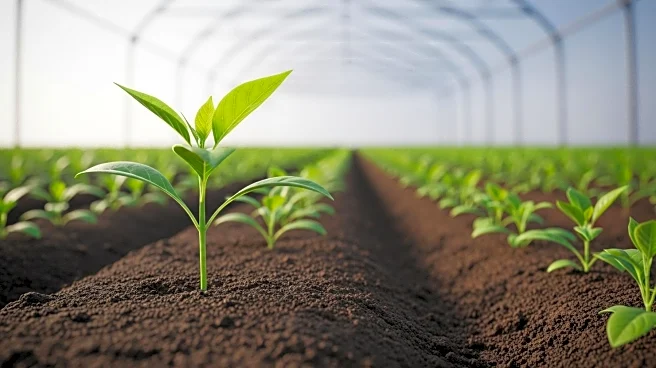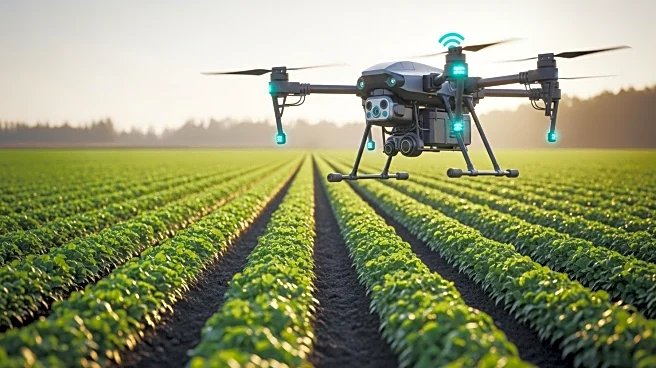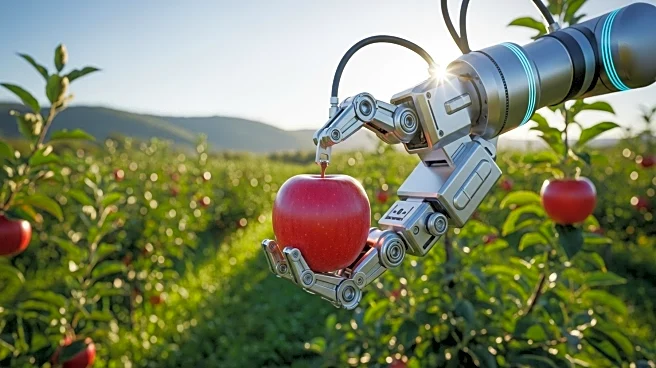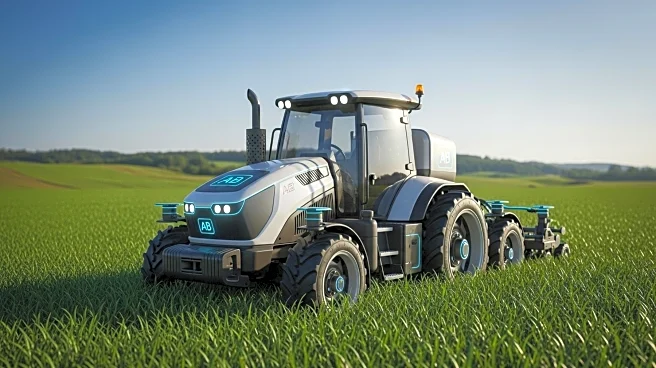What's Happening?
The global agriculture equipment market is experiencing significant growth, with projections indicating it will reach USD 281.46 billion by 2033. This growth is driven by increased mechanization in the agricultural sector, rising food demand, and technological advancements. The market, valued at USD 179.88 billion in 2024, is expected to grow at a compound annual growth rate (CAGR) of 5.1% from 2025 to 2033. Key trends supporting this expansion include the shift from manual to mechanized farming solutions, such as tractors and harvesting machines, which boost productivity and address labor shortages. Additionally, smart farming technologies, including GPS-equipped tractors and precision harvesting, are gaining traction, facilitating real-time monitoring and efficient resource usage.
Why It's Important?
The growth of the agriculture equipment market is crucial for enhancing productivity and efficiency in farming operations, which is vital to meet the increasing global food demand. As the population grows, there is pressure to produce more food with less labor and land, making advanced agricultural equipment essential. The adoption of smart technologies in farming not only improves yields but also reduces waste and enhances efficiency. This market expansion benefits farmers by reducing labor costs and improving crop yield and quality, while also addressing environmental and sustainability goals through innovations like electric tractors and smart harvesters.
What's Next?
The agriculture equipment market is expected to continue evolving with government support and subsidies encouraging the adoption of modern farm technologies. Equipment rental and sharing models are emerging as solutions to affordability constraints, allowing farmers access to high-end machinery without full purchase costs. The market will likely see further growth in electric and smart machinery, aligning with environmental sustainability goals. Major players in the industry, such as Deere & Company and Kubota Corporation, are focusing on developing efficient machinery and expanding product portfolios to cater to both large farms and smallholder needs.
Beyond the Headlines
The shift towards mechanization and smart farming technologies in agriculture has broader implications for rural economies and workforce dynamics. As advanced machinery becomes more prevalent, there is a growing need for skilled workers to operate and maintain these technologies, potentially leading to new job opportunities and training programs in rural areas. Additionally, the increased efficiency and productivity in farming could contribute to stabilizing food prices and improving food security globally.
